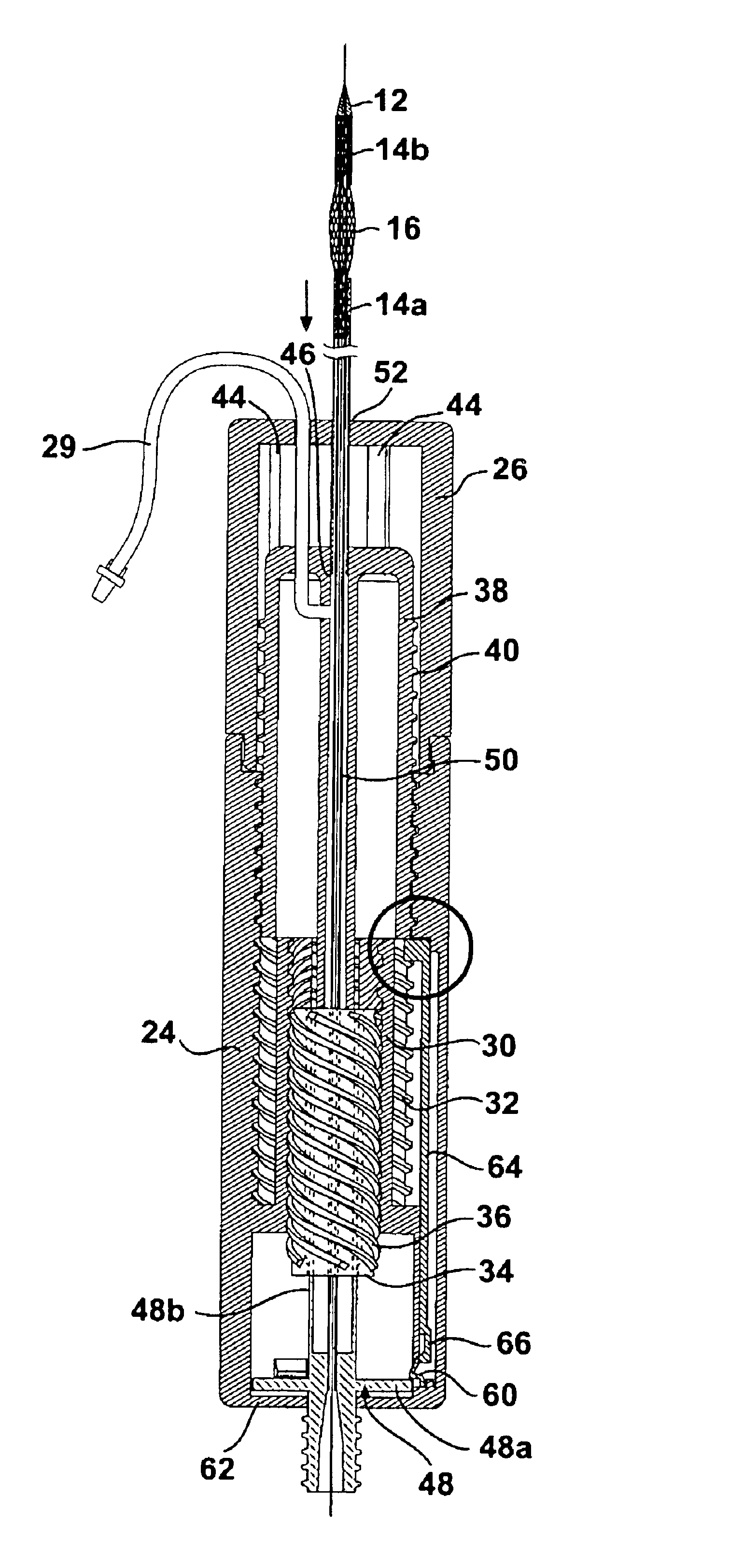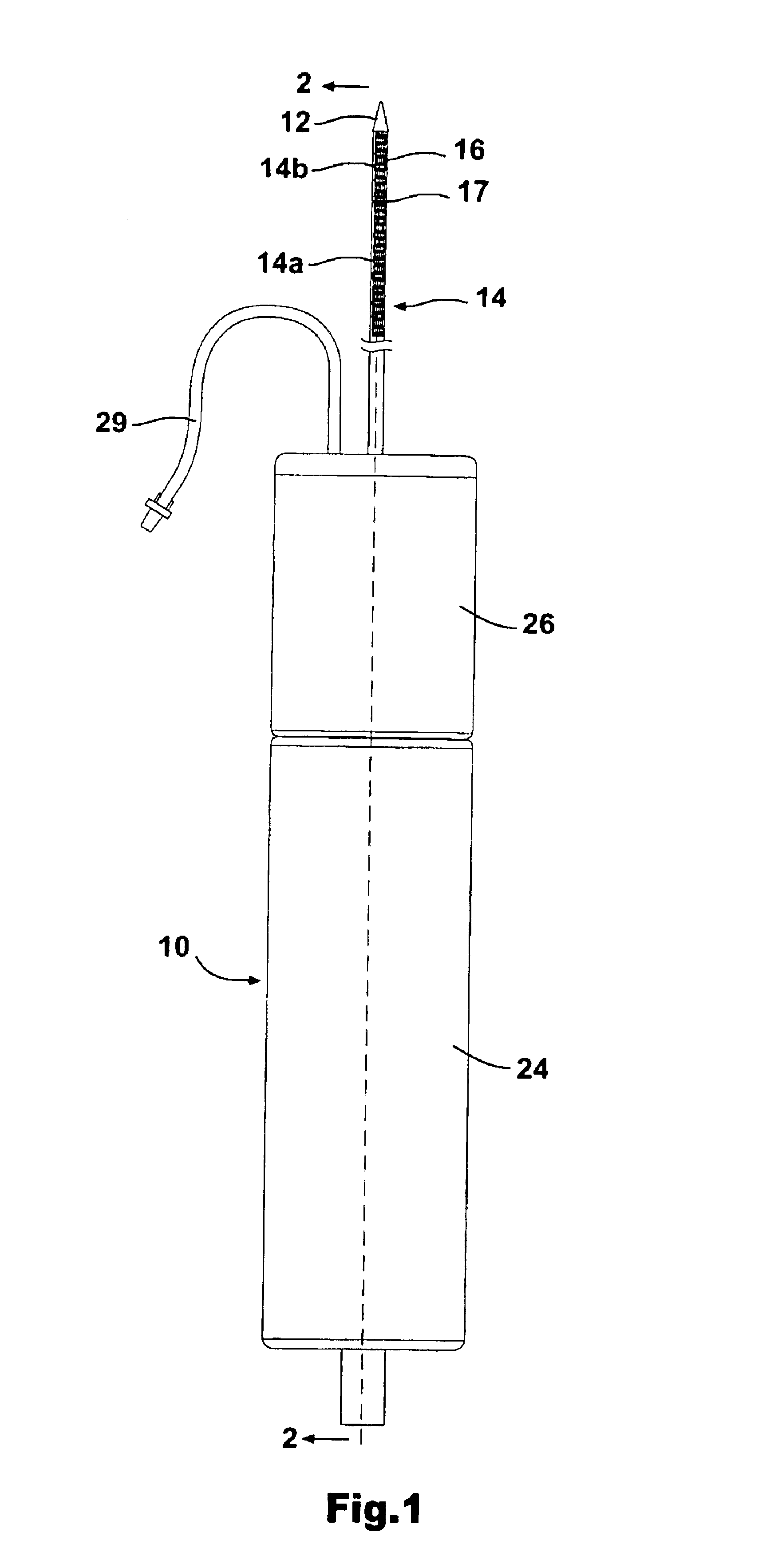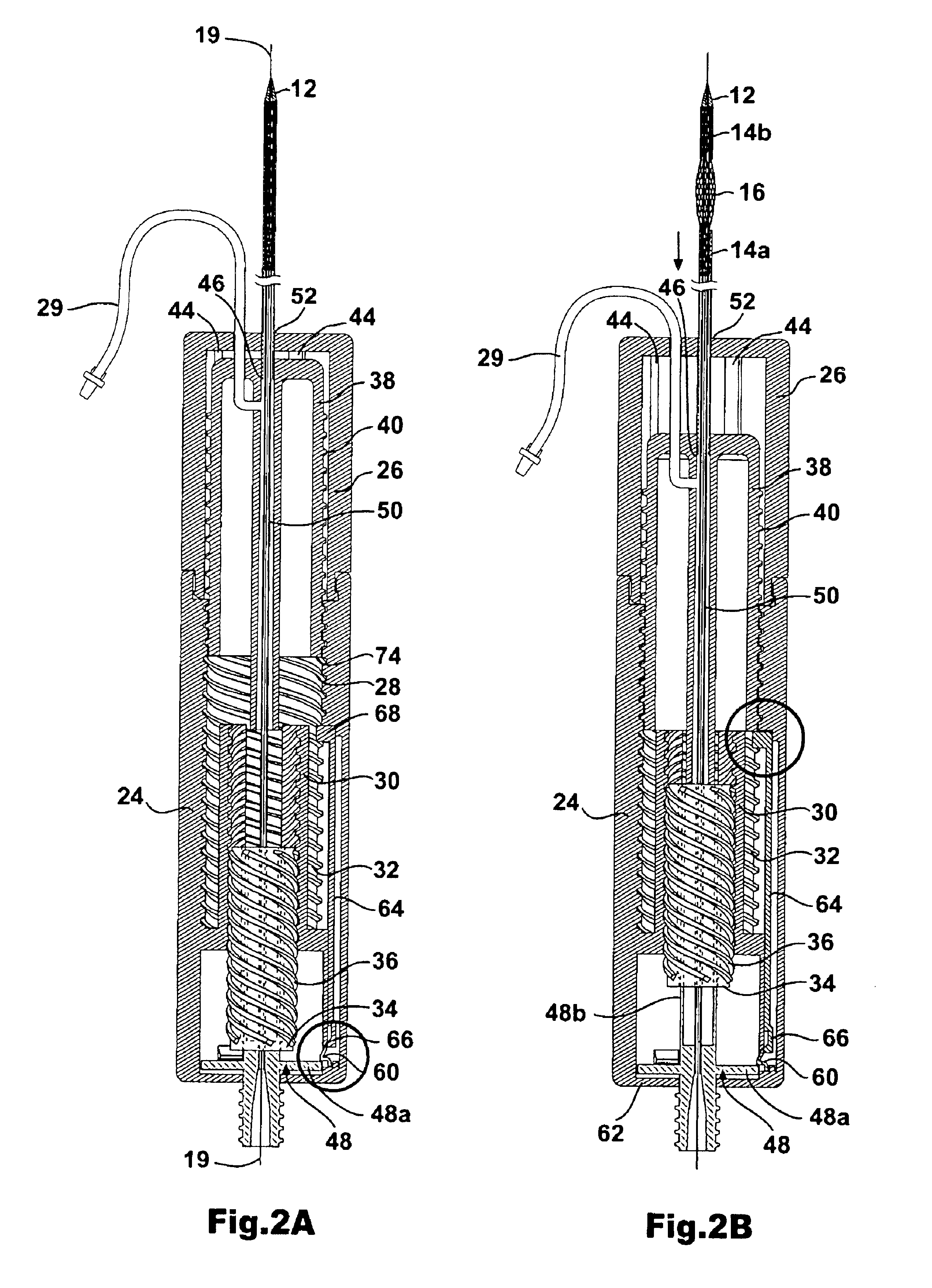Stent delivery system
a delivery system and stent technology, applied in the field of medical devices, can solve the problems of unfavorable repositioning of stents, unsafe repositioning of stents, and stents that cannot be safely placed back within the sheath, so as to prevent undesired forward movement of the tip, safe repositioning, and minimize the effect of undesired movement of stents
- Summary
- Abstract
- Description
- Claims
- Application Information
AI Technical Summary
Benefits of technology
Problems solved by technology
Method used
Image
Examples
Embodiment Construction
As shown in FIG. 1, the stent delivery system according to the present invention includes a a sheath assembly 14 for retaining a self-expanding stent 16 at a distal end of the system, the sheath assembly 14 including a proximal sheath portion 14a and a distal sheath portion 14b. The stent delivery system further includes a mechanism 10 for controlling the movement of the proximal sheath portion 14 in a proximal direction and the movement of the distal sheath portion 14b in a distal direction. The proximal sheath portion 14a and the distal sheath portion 14b are operably coupled to the mechanism 10 such that proximal sheath 14a and distal sheath portion 14b can be moved apart by the physician in a controlled manner, by operation of the mechanism 10, to thereby expose and deploy the self expanding stent 16. The details regarding the operative connection between the proximal sheath portion 14a and the mechanism 10, as well as the operative connection between the distal sheath portion 1...
PUM
 Login to View More
Login to View More Abstract
Description
Claims
Application Information
 Login to View More
Login to View More - R&D
- Intellectual Property
- Life Sciences
- Materials
- Tech Scout
- Unparalleled Data Quality
- Higher Quality Content
- 60% Fewer Hallucinations
Browse by: Latest US Patents, China's latest patents, Technical Efficacy Thesaurus, Application Domain, Technology Topic, Popular Technical Reports.
© 2025 PatSnap. All rights reserved.Legal|Privacy policy|Modern Slavery Act Transparency Statement|Sitemap|About US| Contact US: help@patsnap.com



